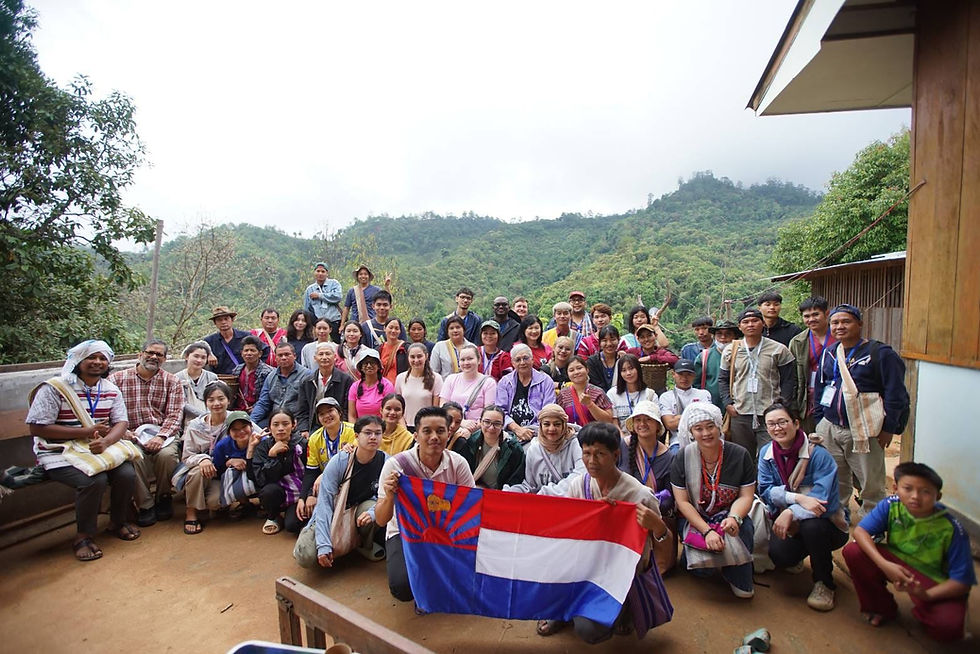50th Anniversary of Together Today For Our Children Tomorrow
- communications241
- Feb 14, 2023
- 3 min read

Today marks the 50th Anniversary of Together Today For Our Children Tomorrow being presented in Ottawa. Led by a delegation of First Nation leaders including Kwänlin Dun First Nation Chief and Yukon Native Brotherhood leader, Elijah Smith and the then Chief of the Mayo Indian Band, Peter Lucas, the document was the first step in a long road towards self-governance for Yukon First Nations, and the beginning of modern-day treaty negotiations in Canada.
By understanding where we came from we may not only inform our future, but the future of Indigenous Nations around the world. Today we encourage you to read the document Together Today For Our Children Tomorrow , and read more at Mappingtheway.ca.
Self Governance Since Time Immemorial
Before the arrival of white settlers, Yukon First Nations had a thriving trade economy and distinct governance structures founded in matrilineal family structure, Clans, and kinship. We know this from the writings of early settlers, and more importantly from the stories shared to us by our Elders.
The Indian Act
After Canada’s confederation, The Indian Act was introduced in 1876 and replaced traditional governance structures with a western colonial model designed to foster assimilation. During this time, Yukon First Nations signed no treaties with Canada.
The Road to the Self-Governance
The groundwork for Self-Governance began over 120 years ago with Ta’an Kwäch’än Hereditary Chief Jim Boss’s petition to the Yukon Commissioner and the Superintendent General of Indian Affairs for compensation to his people for loss of land and hunting grounds.
In the 1960s and 1970s many advocacy organizations were formed including the Yukon Native Brotherhood, The Council of Yukon Indians (now Council of Yukon First Nations), Yukon Association of Non-Status Indians, the Whitehorse Aboriginal Women’s Circle, and more. These Leaders sparked critical conversations about the rights of Indigenous peoples to rights over self-governance and land claims.
The document Together Today For Our Children Tomorrow was written by the Council for Yukon Indians and outlined the heart of major issues that Yukon First Nations were facing, in addition to an argument for the importance of First Nations self-governance. The document was presented in Ottawa on February 14, 1973 led by a delegation of First Nation leaders including Kwänlin Dun First Nation Chief and Yukon Native Brotherhood leader, Elijah Smith and the then Chief of the Mayo Indian Band, Peter Lucas.
The Umbrella Final Agreement
After more than two decades of negotiations with Ottawa and the Yukon Government, the Umbrella Final Agreement was signed in 1993 by all 14 Yukon First Nations. This was not a legally binding document, but rather a political one and set an agreement framework that would lay out the future individual Final Agreements. Additionally, this agreement led to the creation of a number of boards and committees to give Yukon First Nation voices a formal seat at the table in territorial governance matters.
First Nation of Na-Cho Nyäk Dun’s Final Agreement
FNNND was one of the “first four”, signing our Final Agreement and Self Governing Agreement on May 29,1993. The First Nation of Na-Cho Nyäk Dun’s Final Agreement is a legally binding document that outlines FNNND’s right to self-governance and land claims.
“The First Nation of Nacho Nyak Dun asserts aboriginal rights, titles and interests with respect to its Traditional Territory; the First Nation of Nacho Nyak Dun wishes to retain, subject to this Agreement, the aboriginal rights, titles and interests it asserts with respect to its Settlement Lands; the parties to this Agreement wish to recognize and protect a way of life that is based on an economic and spiritual relationship between Nacho Nyak Dun and the land” The Future While the right to self-governance is secured, it’s just the first step in rebuilding our communities, culture, language, and prosperity. Na-Cho Nyäk Dun Development Corporation is focused on economic reconciliation for our people and generating resources for healthy people, lands, and waters. Globally, our agreements are a road map for Indigenous sovereignty everywhere. We’re proud to be leaders, but prouder to uplift our brothers and sisters across the world. The road to reconciliation is paved with collaboration, and we know our future is strong, resilient, and Indigenous.



